For our final stop along the shore of Lake Michigan, we traveled south to the town of Holland, in the middle of a stretch of touristy little beach towns like Saugatuck and Grand Haven. Holland is situated along the shores of Lake Macatawa, an interior lake spanning about 6 miles with an artificial channel out to Lake Michigan. The protected anchorage of the small lake is populated by a large number of sailboats and other pleasure craft, while the sandy beaches along Lake Michigan have been attracting summer tourists since the 19th century.
Dutch Delights
The name of the town is no coincidence. The town of Holland was settled by Dutch Calvinist immigrants in 1847, and the area retains a strong sense of Dutch identity. The influence of the Netherlands is in the place names (the next town over is called Zeeland), the business names (a local bakery near the state park is called Deboer Bakkerij), and the names of the people (Holland’s current city manager and assistant manager are Keith Van Beek and Matt VanDyken). Nowhere is the Dutch heritage more evident than at Windmill Island Gardens, a municipal botanical garden located, appropriately, on reclaimed swamp land. The highlight of the garden’s annual calendar is Tulip Time in April and May, when 150,000 tulips bloom throughout the grounds. There are smaller botanical displays during the rest of the year, but the main attraction is the authentic, working windmill that dominates the landscape. De Zwaan (the Swan) dates back to 1833, and obtaining it for the city took some finagling. Functioning windmills are protected national monuments in the Netherlands, especially since many historic ones were destroyed in World War II. After a three-year period of negotiation, in 1964 the Dutch government sold de Zwaan, which was in poor condition, to a group of Michigan business leaders with the stipulation that it be rebuilt in its new location by a Dutch millwright, and that it be operated for educational purposes. The structure was disassembled into thousands of pieces, shipped to the port of Muskegon, trucked to the site, and restored to working order before being dedicated by none other than Prince Bernhard of the Netherlands. It turned out to be the very last historic windmill to leave the country.
Visiting the botanical garden was both interesting and strange. The interesting part was touring the windmill, which is fully functional and grinds flour used by local bakeries. Seeing the ancient huge timbers held together by wooden pegs, the iron tools used to maintain the building, and the complex set of wooden gears connecting the blades to the grinding stones was all fascinating. The strange part was …. everything else. The garden includes a series of structures that are replicas of buildings in various parts of the Netherlands (an inn, fisherman’s houses, and an orphanage), but here they house a gift shop, wedding venue facilities, and a little scale model of a Dutch town. There are Friesian horses occupying a field near the windmill, and a reproduction drawbridge from the mainland to the island where the windmill sits, painted in the colors of the Dutch flag. There is a 19th century street organ that plays loudly every half hour. There are giant wooden shoes and metal tulips just waiting to be incorporated into your photos. Oh, and all the staff and volunteers are dressed in historic Dutch garb. It’s what I might expect from a Netherlands display at EPCOT, but it’s located in a Michigan beach town. This visit was free for us through the botanical garden reciprocal admissions program; in my opinion the $12 entry fee would only be justified during the tulip bloom.
We also spent some time walking around downtown Holland, which is a national historic district thanks to its abundance of distinctive 19th century buildings. Centennial Park is a multi-block green space that sits at the heart of the historic district and is full of gorgeous landscaping. Even new buildings in the historic area adhere to the architectural scheme, making the place feel like a real throwback to the old country… until you realize that many of the little shops in the charming buildings are the same ones found in every suburban mall in America. Our favorite stop downtown was at Big Lake Brewing, because, well, beer.
Grand Rapids
We followed wise advice from our friends Kevin and Laura over at Chapter 3 Travels and planned a two-stop day trip to Grand Rapids during this stay. Our first stop was at the museum component of the Gerald R. Ford Presidential Library (the library is in Ann Arbor), one of over a dozen presidential libraries managed by the National Archives. Probably because of his relatively short tenure of just under 900 days in office, Ford is not a president about whom I have spent much time thinking. But we have enjoyed our visits to other presidential libraries (Truman in Missouri and Johnson in Texas) so we were happy to invest the time in checking this one out.
The museum does an excellent job of telling his life story, from his childhood in Grand Rapids through his college and law school years and his service in the Navy during WWII, with fun archival photos, documents, and artifacts bringing the exhibits to life. Jerry Ford was an Eagle Scout, a popular athlete, and a patriot who sought out active duty during the war. In what would turn out to be a recurring theme of his life, Ford ran for Congress in 1948 against an entrenched Republican party boss on a platform of cleaning up politics, and won by a two-to-one margin. He went on to represent the Grand Rapids area in Congress for 25 years. While not a flashy debater, he learned the ins and outs of the federal budget process while serving on the important House Appropriations Committee and built a reputation for fairness, integrity, and always being prepared and well-informed. He was esteemed enough among his colleagues to be elected House Minority Leader in 1964. His ambition was to become Speaker of the House, which would require Republicans taking the majority in that chamber, but it was not to be.
In 1973 Spiro Agnew, the extremely shady Vice President to Richard Nixon, resigned following a bribery and corruption scandal relating to his time as governor of Maryland. Nixon had the opportunity to appoint a new Vice President under the 25h Amendment, but that nominee would need to be confirmed by the House. Jerry Ford was the one choice guaranteed to sail through confirmation by a Democratic-controlled House, since he was respected by colleagues on both sides of the aisle. Ford had barely gotten settled into the role of VP when Nixon himself was forced to resign during the Watergate scandal, making Ford the only person to become President of the United States without being elected either as president or vice president.
In his personal qualities, Ford was a revolutionary departure from his two predecessors (Johnson and Nixon) who were widely described as deceptive, vindictive, and moody, and the country really needed that reset. In a tribute, the legendary Speaker of the House Tip O’Neill (a Democrat) put it this way: “God has been good to America, especially during difficult times. At the time of the Civil War, he gave us Abraham Lincoln. And at the time of Watergate, he gave us Gerald Ford—the right man at the right time who was able to put our nation back together again.” It’s hard for a museum to illustrate something as ephemeral as a change in attitude, but the Ford museum does a great job of using archival materials like photos and the guest lists for state dinners to demonstrate how Ford was far more open with reporters and with members of the opposing party.
The museum is honest in its assessment of his presidency. There were plenty of challenges, ranging from poor economic conditions to the ignominious evacuation from the embassy roof in Saigon after we lost the Vietnam War once and for all. Like any competent manager, Ford worked diligently to make improvements where possible. He facilitated resettlement of Vietnamese refugees, trimmed government budgets to combat inflation, spearheaded policies to alleviate US dependence on foreign oil, and pushed forward international efforts toward detente with the USSR. Ford was able to restore the Republican brand enough that he ended up just two percentage points behind Jimmy Carter in the 1976 election. And Carter had such respect for Ford that, in his inaugural address, Carter thanked Ford for doing the important work of healing the nation.
The museum ably illustrates the cruelty of politics. Ford was an incredibly gifted athlete who excelled at football (back when players had to play offense, defense, and special teams), boxing, swimming, and skiing, yet he was portrayed in the media as a klutz because he tripped once. And he was viewed as an intellectual lightweight despite having graduated in the top 25% of his class at the Yale Law School, back when they had actual grades and he was in a class with two future Supreme Court justices. No wonder it’s so hard to get good people to run for office. But overall, I found the story of Ford’s life to be inspirational. The idea that the step-son of a paint salesman from a small city in Michigan could become leader of the free world on the strength of his integrity and character is remarkable — and almost too good to be true.
Our second stop in Grand Rapids was at Founders Brewing, half a mile away. Their beer absolutely lived up to its reputation, and the brewpub filled with stained glass art was a great atmosphere to debrief after our Ford museum visit.
Where We Stayed
We selected Holland State Park because it includes a large, sandy beach on Lake Michigan with a swimming area, along with the chance to camp in a more secluded, wooded area half a mile from the beach. We did not expect that the beach area would be so small that weekday visitation looked like Panama City Beach at Spring Break. We also didn’t expect that the roped-off swimming area would be so small and close to shore that “swimmers” were just wading in thigh-deep water. And we didn’t expect the campground to be row upon row of campers practically on top of each other, with no privacy, no site separation, and way too much chaos. It was a bit disappointing, to say the least.
On the bright side, thanks to our diligence and advance planning we did have one of the very few nice sites in the park with excellent tree cover surrounding us, and we enjoyed the short but scenic park trail system that includes both wooded areas and lake views.
Overall, this was an odd interlude in our travels. We are hoping to return to normal (or just a lot fewer people in costumes) in our next stop, in which we explore the Ann Arbor / Detroit area.
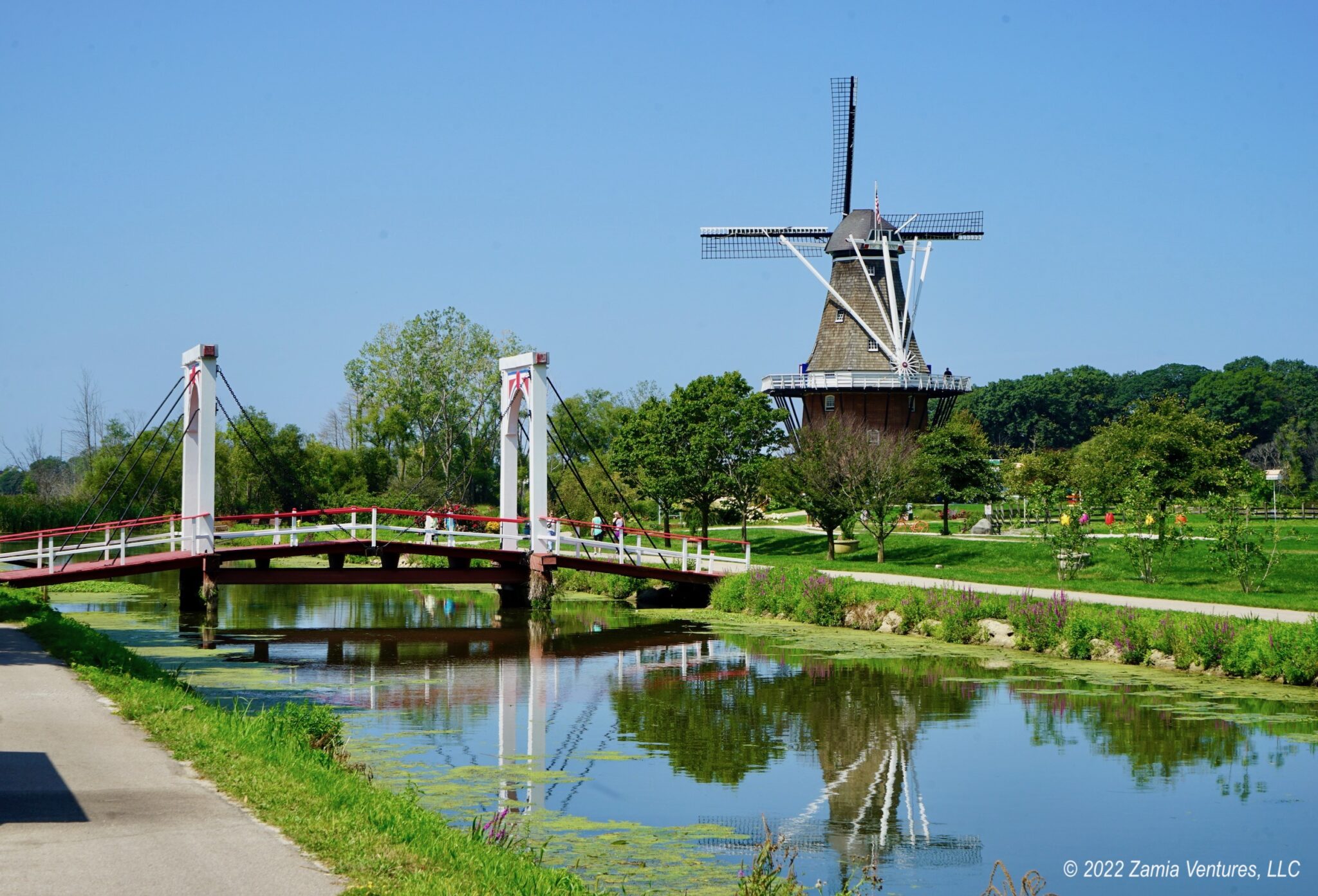
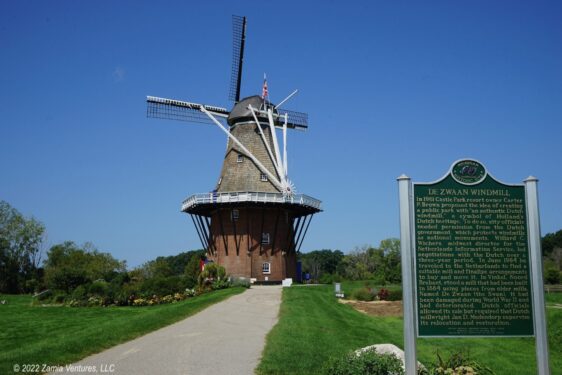
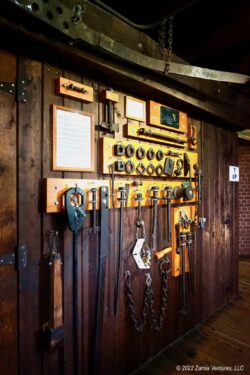
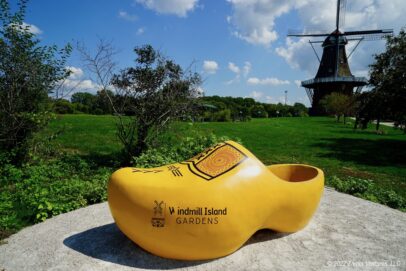
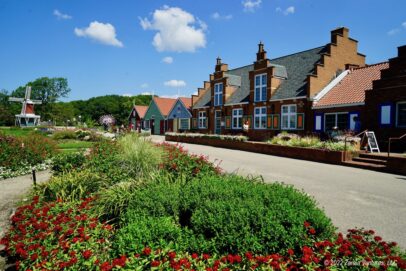
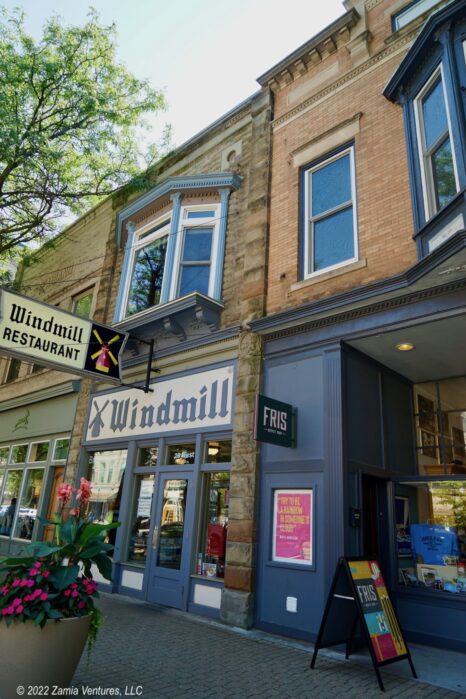

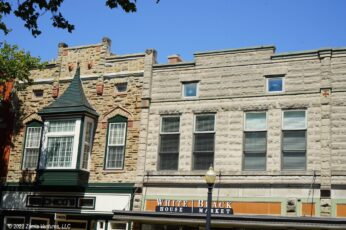
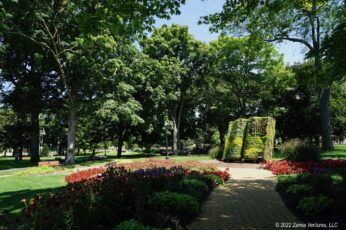
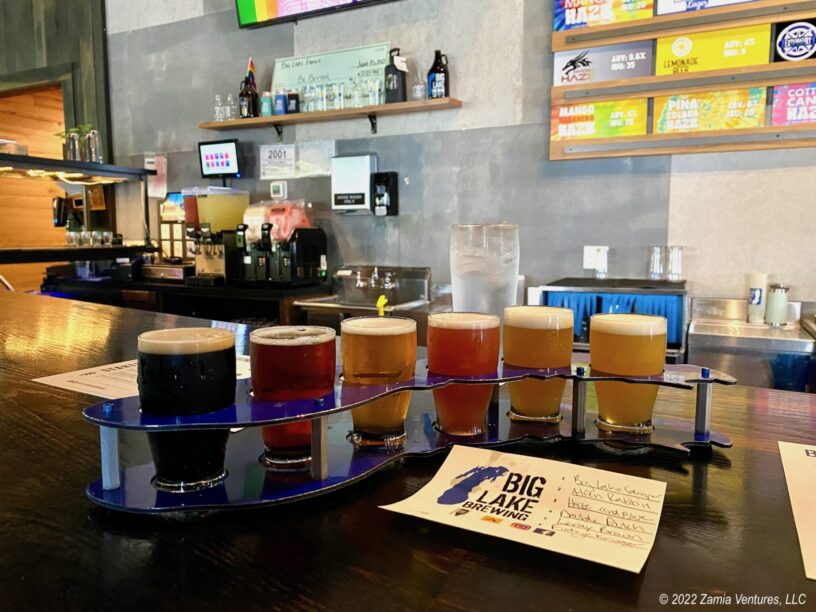
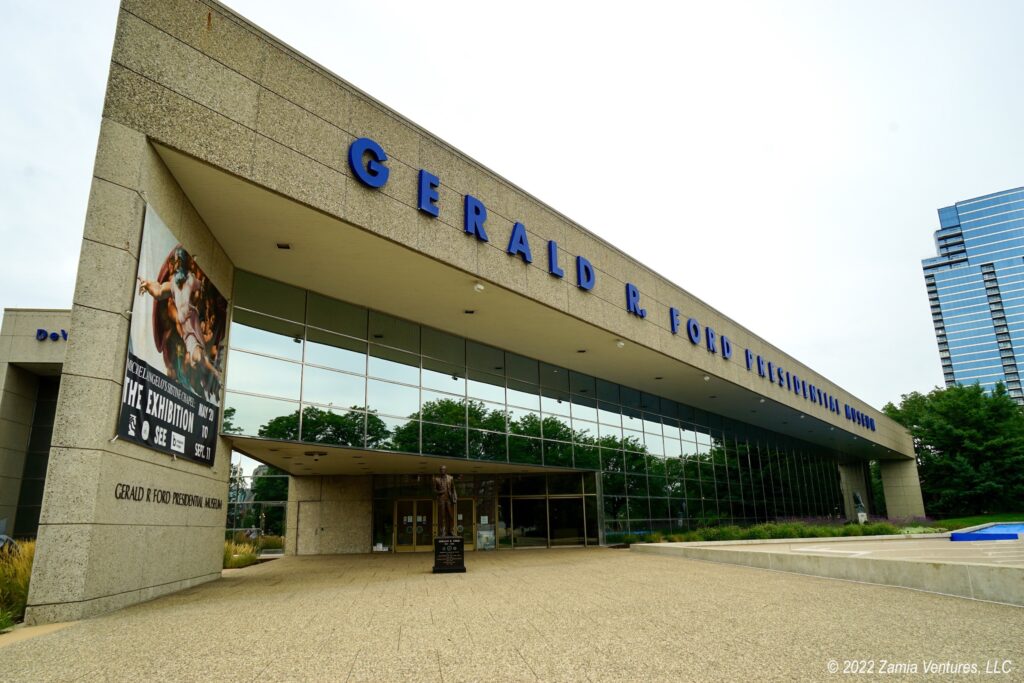
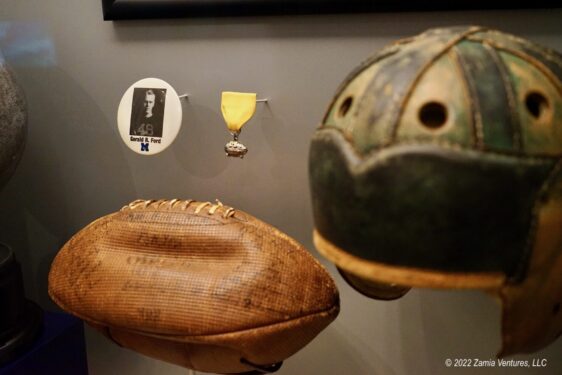
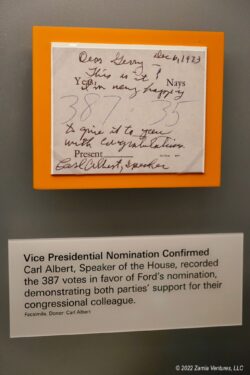
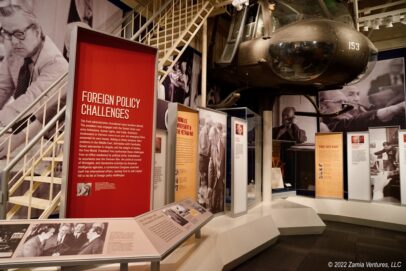
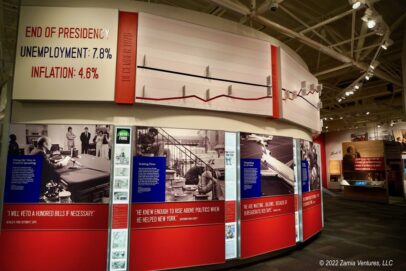
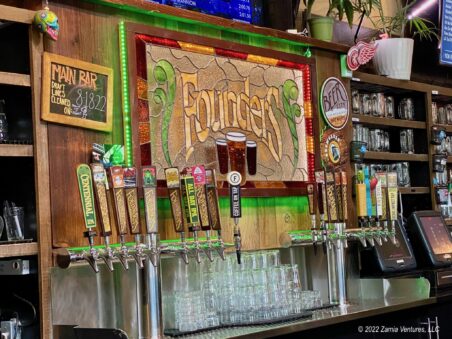
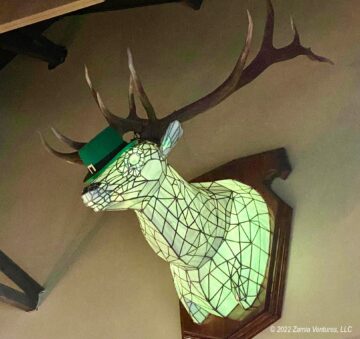
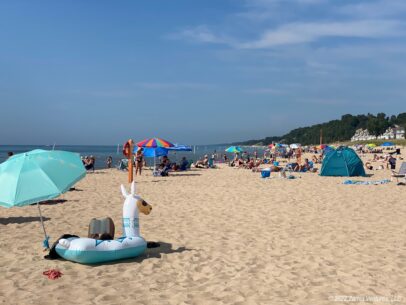
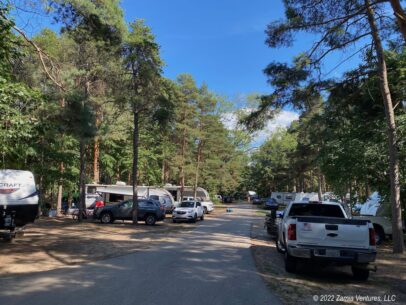
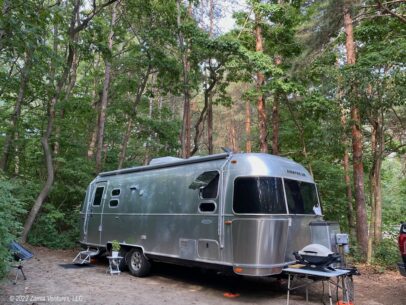
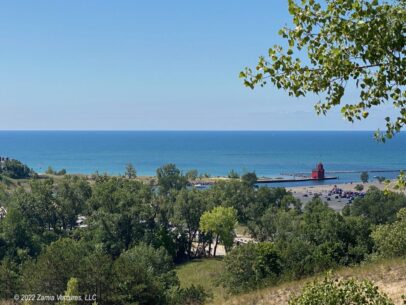
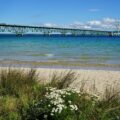

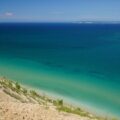
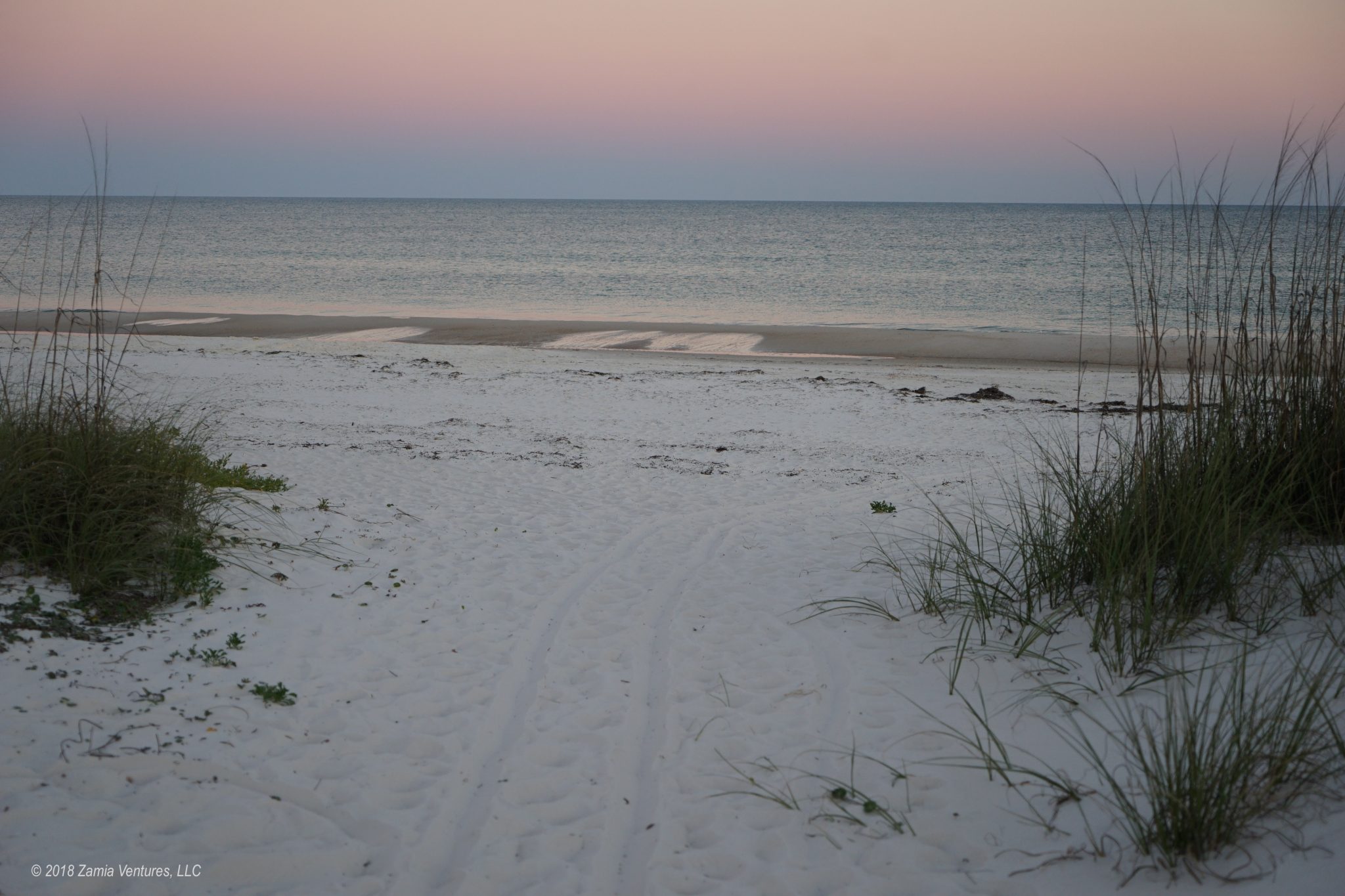
I’m pretty sure after reading your post that I don’t need to visit Holland, MI. Although the authentic windmill does look pretty cool. The city was apparently really determined to get that windmill!
But now I’m really looking forward to our visit to Grand Rapids at the end of September. Your description of your impressions of the Ford Presidential Library is very engaging. I’ve never really thought much about Gerald Ford, other than thinking that he seemed like a nice guy and he was a great relief from crazy Nixon. I continue to be impressed at how you can visit a museum/presidential library/wherever and sum it all up in a few well-written, interesting paragraphs.
Have fun in Ann Arbor! As you know, we loved our visit there.
The amount of cosplay we’ve seen in Michigan is surprising, and not in a good way! The whole time we were at Windmill Gardens I was imagining what an actual Dutch citizen would think if they visited today…. I think they would find it very weird, to say the least. But the windmill was very cool.
I highly recommend the Ford Museum. We’ve generally enjoyed our visits to presidential libraries, and this one is very well done. There is also a well-regarded botanical and sculpture garden in Grand Rapids, but it was raining the day we visited so we didn’t check it out. There’s a lot to do in GR, so I hope you enjoy it.
I think Holland, MI looks very pretty even if a bit strange. Did you try any traditional Dutch food to go with that beer? I’m sad there are no pictures of the Friesian horses. Sorry that campground was punier and more crowded than you’d hoped. Midwestern vacationers and the places they go are…odd, and I speak from growing-up experience. Your virtual tour through the Ford Library was very interesting. He always seemed like such an unassuming man, which we could use a lot more of these days!
Sadly, we did not try any Dutch food. The cafe/bakery (sorry, “bakkerij”) near the campground was consistently packed, so they must be doing something right! But I was skeptical enough that I told Ken we would go to the Netherlands eventually instead. I was also sad about no horse photos — they were hiding on the opposite side of the field from the walking path and behind a structure so we only caught glimpses of them from the windmill.
I really enjoyed the Ford Library, perhaps even more so because (unlike other aspects of this visit) it really exceeded my expectations. I agree with you, we could use a lot more good, decent people these days, especially in politics.
I must say that I am surprised by the good reputation and popularity of the Michigan state park system, because we haven’t been impressed by any of the places we camped. It’s almost as if most of the campers have never been out of the state to see what really great state parks look like.
Like you, I hadn’t really thought much about President Ford before visiting his museum, but I’ve been fascinated at how often his decision to pardon Nixon comes up in modern day political conversation. The whole question being: did his pardon send a message that politicians could act without concern of consequences and accountability? I certainly understand what he was trying to do, but I can’t help but wonder what would have happened had he made a different decision.
Agree on the windmill garden – pretty, but a bit weird, and as you said, you gotta wonder what a Dutch person would say about it. There’s a fine line between tastefully paying homage to a different culture and just going full on Disney/Busch Gardens.
We were also intrigued by the pardon decision, which was deeply divisive and led to plenty of angry correspondence and phone calls to the White House (which Ford answered, of course, because he was a good guy). Ken’s theory, which I think has a lot of merit, is that Ford was influenced by the upcoming bicentennial celebration. He knew that prosecution of Nixon would take a year or more, and it could drag on into the bicentennial year. That would have been a bummer during what should have been a happy time.
Something I didn’t mention in the post is that the costumed workers were also aggressively friendly, so it wasn’t really possible to just tour the gardens and take it all in. We were forced into conversation with interpreters at every turn. I do not like being accosted by people in weird hats. 🙂
LOL…. I totally hear you. Actually, one of the worst presidential library experiences I ever had was the George W. library because the docents wouldn’t leave me alone. There’s nothing worse than ‘aggressively friendly.’ Especially when they all look like they’re on an episode of: “Dallas Cowboy Cheerleaders – the Later Years.”
Anyway, interesting theory about the bicentennial. That definitely could have had an impact.
I am having no trouble at all envisioning the scene you describe. It definitely makes me less sad that we missed both Bush libraries when we visited Texas a few years ago.